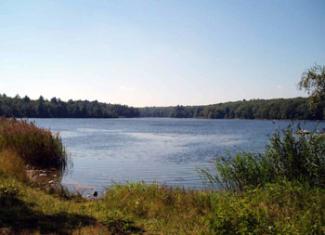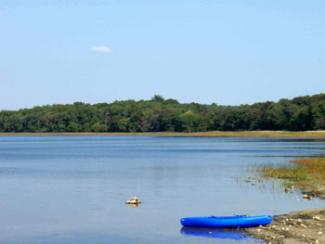Freshwater Lakes, Ponds and Reservoirs

Rhode Island's landscape includes hundreds of freshwater lakes and ponds covering 20,749 acres (mapped at 1:24000). Named as ponds, lakes or reservoirs, these waterbodies provide multiple recreational opportunities, important aquatic habitat, and a reliable source of drinking water supply for a majority of Rhode Island residents. The DEM Office of Water Resources currently tracks the water quality condition of 237 freshwater lakes, ponds and reservoirs, covering 18,845 acres, which constitutes about 91% of the total acreage mapped statewide; the remaining 9% is comprised of very small ponds. (Note: Current data is not available for all 237 lakes.)

Lakes, ponds and reservoirs (hereafter referred to as lakes) are widely distributed throughout the state although some communities have only one sizable pond. Generally lakes are thought of as being larger than ponds, but this isn't the case in RI where historically both terms were used to name waterbodies regardless of size. Most of RI's lakes are considered small - 70% are 50 acres or less in size. Only four exceed 500 acres - Watchaug Pond, Flat River Reservoir, also known as Johnson's Pond, Worden Pond and the Scituate Reservoir.
Most RI lakes and ponds are in fact man-made impoundments resulting from the construction of dams of varying sizes and types on rivers or streams. Among the lakes tracked by DEM, only 25% are considered natural lakes or ponds and of these only five are larger than 100 acres. Worden's Pond is the state's largest natural pond covering 1,051 acres.
Reservoirs are a primary source of public drinking water supply for RI residents. Forty-three (43) reservoirs, lakes or ponds covering 7,823 acres or 37% of the statewide lake acreage, are designated as public drinking water sources. This includes the state's largest freshwater body, the Scituate Reservoir, which provides water to the Providence metropolitan region and a number of its surrounding suburban communities. About 75 % of the state population relies in whole or part on freshwater reservoirs for its drinking water supply.
